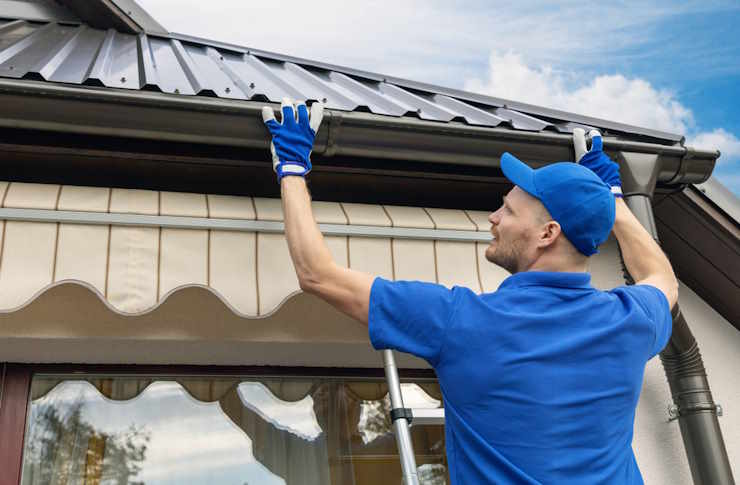Roof Waterproofing: Essential Protection for Your Home's Crown
Roof waterproofing is a crucial aspect of home maintenance that often goes overlooked until problems arise. A well-waterproofed roof protects your home from water damage, mold growth, and structural issues. This article will explore the importance of roof waterproofing, its benefits, and the various methods used to ensure your home remains dry and secure.

What are the common methods of roof waterproofing?
There are several effective methods for waterproofing a roof, each suited to different roof types and materials:
-
Liquid waterproofing membranes: These are applied as a liquid coating that forms a seamless, flexible barrier when dry. They are ideal for flat or low-slope roofs and can easily conform to irregular shapes.
-
Sheet membranes: These pre-fabricated sheets are typically made of materials like rubber or modified bitumen. They are rolled out and adhered to the roof surface, providing excellent protection against water infiltration.
-
Cementitious waterproofing: This method involves applying a mixture of cement, sand, and water-resistant additives to the roof surface. It’s particularly effective for concrete roofs and can withstand foot traffic.
-
Bituminous coating: A popular choice for flat roofs, bituminous coatings are made from asphalt and provide a durable, water-resistant layer when applied to the roof surface.
-
Polyurethane foam: This spray-applied foam creates a seamless, lightweight layer that both insulates and waterproofs the roof.
How long does roof waterproofing last?
The lifespan of roof waterproofing depends on various factors, including the method used, quality of materials, and environmental conditions. Generally, most waterproofing solutions can last between 10 to 25 years when properly applied and maintained. However, regular inspections and maintenance are crucial to ensure optimal performance and longevity.
What are the signs that a roof needs waterproofing?
Several indicators suggest that your roof may require waterproofing:
-
Water stains on ceilings or walls
-
Mold or mildew growth in the attic or upper floors
-
Peeling paint or wallpaper
-
Visible cracks or gaps in the roof surface
-
Pooling water on flat roofs
-
Increased energy bills due to compromised insulation
If you notice any of these signs, it’s essential to address the issue promptly to prevent further damage to your home.
How is roof waterproofing applied in construction?
In new construction, roof waterproofing is typically integrated into the building process. Architects and contractors consider factors such as climate, roof design, and materials when selecting the appropriate waterproofing method. The process often involves:
-
Proper roof slope design to ensure adequate drainage
-
Installation of a high-quality underlayment beneath roofing materials
-
Application of waterproofing membranes or coatings
-
Careful attention to flashing details around chimneys, vents, and other roof penetrations
-
Integration of gutters and downspouts for efficient water management
For existing buildings, retrofitting waterproofing solutions may involve removing old roofing materials, repairing any damage, and then applying the chosen waterproofing method.
What are the costs associated with roof waterproofing?
The cost of roof waterproofing can vary significantly depending on factors such as roof size, chosen method, and location. Here’s a general overview of pricing for different waterproofing methods:
| Waterproofing Method | Average Cost (per sq. ft.) | Typical Lifespan |
|---|---|---|
| Liquid Membranes | $3 - $7 | 10-20 years |
| Sheet Membranes | $4 - $8 | 15-25 years |
| Cementitious | $2 - $5 | 10-15 years |
| Bituminous Coating | $2 - $4 | 5-10 years |
| Polyurethane Foam | $4 - $7 | 20-30 years |
Prices, rates, or cost estimates mentioned in this article are based on the latest available information but may change over time. Independent research is advised before making financial decisions.
Keep in mind that these costs are estimates and can vary based on your location, the complexity of the job, and the specific products used. It’s always recommended to obtain multiple quotes from reputable contractors in your area for accurate pricing.
Roof waterproofing is a vital investment in your home’s longevity and your family’s comfort. By understanding the importance of waterproofing, recognizing signs of water damage, and choosing the right method for your roof, you can protect your home from the damaging effects of water infiltration. Regular maintenance and timely repairs will ensure that your roof continues to shield your home effectively for years to come.






